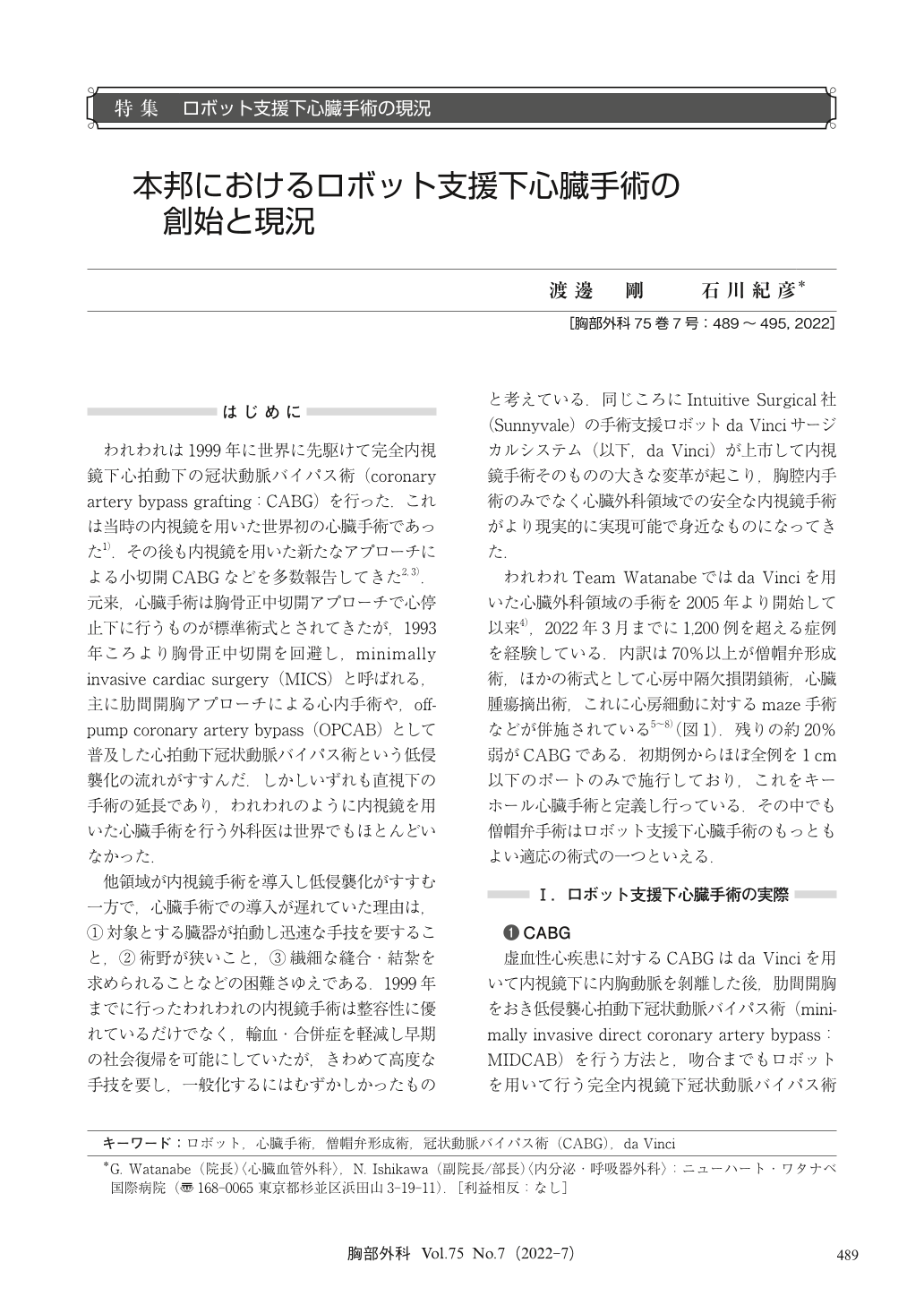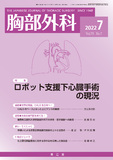Japanese
English
- 有料閲覧
- Abstract 文献概要
- 1ページ目 Look Inside
- 参考文献 Reference
われわれは1999年に世界に先駆けて完全内視鏡下心拍動下の冠状動脈バイパス術(coronary artery bypass grafting:CABG)を行った.これは当時の内視鏡を用いた世界初の心臓手術であった1).その後も内視鏡を用いた新たなアプローチによる小切開CABGなどを多数報告してきた2,3).元来,心臓手術は胸骨正中切開アプローチで心停止下に行うものが標準術式とされてきたが,1993年ころより胸骨正中切開を回避し,minimally invasive cardiac surgery(MICS)と呼ばれる,主に肋間開胸アプローチによる心内手術や,off-pump coronary artery bypass(OPCAB)として普及した心拍動下冠状動脈バイパス術という低侵襲化の流れがすすんだ.しかしいずれも直視下の手術の延長であり,われわれのように内視鏡を用いた心臓手術を行う外科医は世界でもほとんどいなかった.
Endoscopic surgery has been introduced as a minimally invasive procedure in other fields. On the other hand, the introduction of surgical robots has made endoscopic surgery possible in cardiac surgery. Coronary artery bypass surgery includes minimally invasive direct coronary artery bypass (MIDCAB) via small thoracotomy after robotic internal thoracic artery harvesting and totally endoscopic coronary artery bypass with a robotic anastomosis. We refer to intracardiac surgery performed via only ports as “keyhole cardiac surgery”. Robotic keyhole mitral valve repair is far superior to median sternotomy or minimally invasive cardiac surgery (MICS). Currently, the “da Vinci surgical system” is the sole leader in surgical robotics, but there are already many surgical robots, including new concepts. In Japan, the “hinotori surgical robot system” is already on the market, and it is expected that the indications for surgery will expand in the future.

© Nankodo Co., Ltd., 2022


